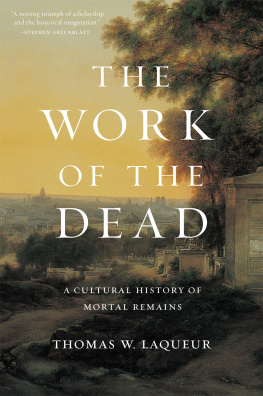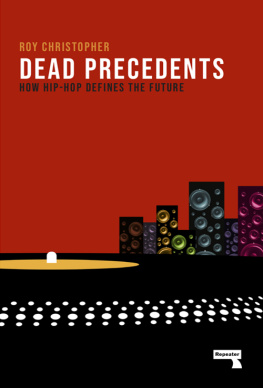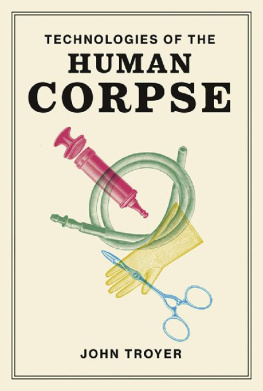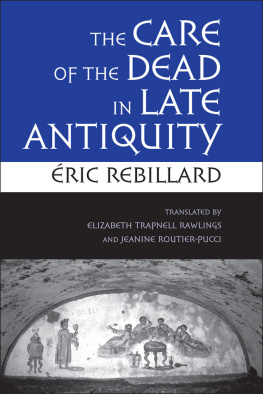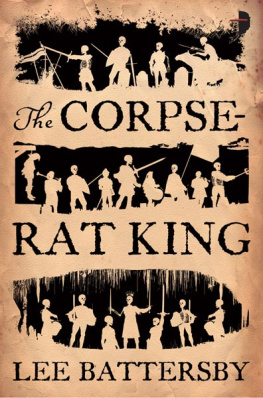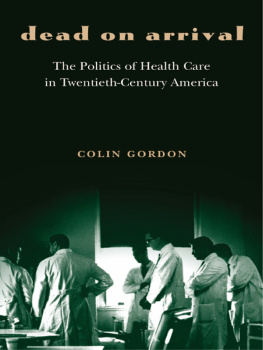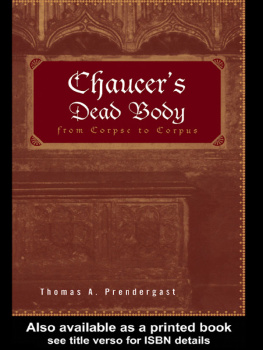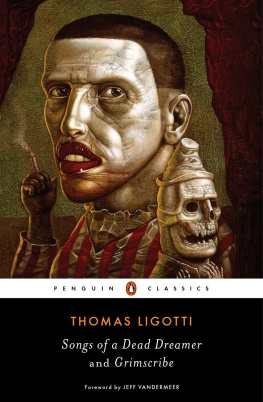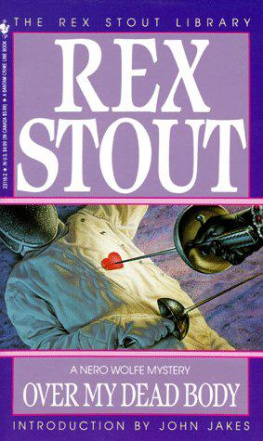THE
WORK
OF THE
DEAD
A CULTURAL HISTORY
OF MORTAL REMAINS
THOMAS W. LAQUEUR
PRINCETON UNIVERSITY PRESS
PRINCETON AND OXFORD
THE
WORK
OF THE
DEAD
Copyright 2015 by Princeton University Press
Published by Princeton University Press,
41 William Street, Princeton, New Jersey 08540
In the United Kingdom: Princeton University Press,
6 Oxford Street, Woodstock, Oxfordshire OX20 1TW
press.princeton.edu
Jacket art: Detail of Paris, vu des hauteurs du Pre Lachaise,
by Louise Josphine Sarazin de Belmont.
Toulouse, Muse des Augustins. Photo Bernard Delome.
All Rights Reserved
Library of Congress Cataloging-in-Publication Data
Laqueur, Thomas Walter.
The work of the dead: a cultural history of mortal remains / Thomas W. Laqueur.
pages cm
Includes bibliographical references and index.
ISBN 978-0-691-15778-8 (hardback)
1. Funeral rites and ceremoniesCross-cultural studies. 2. DeathSocial aspectsCross-cultural studies. I. Title.
GT3150.L37 2015
306.9dc23
2015003565
British Library Cataloging-in-Publication Data is available
This book has been composed in Requiem
Printed on acid-free paper.
Printed in the United States of America
1 3 5 7 9 10 8 6 4 2
Preface
I am not sure when I began this book. I grew up only a phone call away from an autopsya post that is, post-mortem dissectionthat took my father, a pathologist, away from the dinner table to the morgue and left me wondering what happened there and to what. What was a dead body really? He never took me with him, although I did spend hours watching him prepare the organs he had removed from it for microscopic examination and listening to him in his study as he dictated his finding. But in my first eighteen years, I knew the dead body only through hearsay or through its detached parts.
In the summer of 1964, I finally saw onea cadaver to be more precise. It was at the University of Cincinnati, where I was working in a biochemistry lab after my freshman year; my housemate was a first-year medical student who had failed gross anatomy and was asked to try again. He was happy enough for my company. I watched him dissect but did not get my hands on the body. In the summer of 1980, at the beginning of fifteen months on an American Council of Learned Societies fellowship that I used to study medicine, I finally hador rather shared with three othersmy own cadaver. The dead body in these circumstances is a very material thing, with holes through which nerves and vessels and liquids pass, and connective tissues that connect, and tendons that, if pulled, still move muscles.
Wemy tablemates and Ilearned the names of hundreds of structures as we disassembled our body, our object of study. But it also had a face, at least until we started working on the fiendishly difficult anatomy of the head. I was not so blinded by the need to do well on tests not to think about how strange this thing really wasthis body that now seemed to exist only instrumentally for us to learn from. It had been a person, a fact that did not sit well with its current condition. We were told to be respectful toward it and that what remained would be treated once again as human when we were done with it at the end of the summer. Perhaps my subject in this bookthe relationship between the overwhelming materiality of the dead on the one hand and Death and Culture on the otherbegan to come into focus that summer.
But I think that the distant progenitor of an actual bookthis bookwas born a couple of years later: on 10 October 1983, to be exact. On that Monday, I began writing to some sixty or seventy archives and libraries, secular and ecclesiastical, asking what materials they held that might be relevant for a project I then called, I am embarrassed to admit, The Meaning of Death in Post-Reformation Britain. It would be impossible to answer your letter exhaustively, the Buckinghamshire County Archivist wrote back, and the following are cited as examples. No kidding. Archives are repositories of the traces of the dead, of lost time.
The world in which I wrote my letter is lost. My file folder of kind responses is evidence of an age before on-line catalogues and instant e-mail access to everyone, a time of thin blue aerogrammes densely filled with type that can be felt through the paper punctured by an occasional hole, evidence of a period or a comma forcefully struck. It was a world of great courtesy in which archivists had the time to patiently and informatively respond to a youngbut too old to be so cluelessresearcher embarked on a manifestly hopeless mission.
In my defense, I did have two sets of questions in mind that I tried to capture in the beclouded phrase the meaning of death: one was about the existential experience of death and dying; the other concerned their embeddedness in the broader social world. The first, and more intimately urgent, had to do with what we might now call the history of the emotions, or perhaps the history of attitudes toward death understood not as a progression of beliefs but of how people in the past stood, in their hearts, before the overwhelming fact of human existence: mortality and our exquisite consciousness of it. This was a search for a history of death that would go beyond the one told by demographers and doctors on the one hand and intellectual historians and scholars of religion on the other. I took meaning to be essentially an inner experience that might have an accessible history.
The question first troubled me as a doctoral student in reading the attack by Edward Thompson, one of the greatest British historians of the twentieth century, on what he took to be vicious, death-mongering eighteenth- and nineteenth-century evangelicals. By first confronting even little children with the frightening prospect of death and then holding out the false treacle prospect of a good death, Thompsons evangelicals supposedly terrified the young into submission to a life-denying and politically quietist religion. On one point, Thompson was right: death is everywhere in evangelical literature, and the prospect of meeting it with resignation, if not happily, was held out to the faithful of all ages. Dying
More specifically, books like The History of the Fairchild Family by the most popular childrens writer of the early nineteenth century, Mrs. Sherwood, aka Mary Martha Sherwood, seem to make his point. Listen to the father, Mr. Fairchild, speaking to his curious children about the dead body of old John Roberts, the gardener. What begins as Mr. and Mrs. Fairchilds benevolent errand to comfort the mans widow turns into a lesson on the subject of deathembellished by quizzing on parenthetically cited scriptural passagesfor their three childrens edification. Incited by his daughters curiosity about the dead body, Mr. Fairchild asks,
Have you any desire to see the corpse, my dears? You never saw a corpse before, I think?
No papa, answered Lucy: but we have great curiosity to see one.
I tell you before-hand, my dear children, that death is very terrible. A corpse is an awful sight.
I know that, papa, said Lucy; but we should like to go.
Well my dears, you shall go; and you shall, if you please, see the corpse.
... When they came to the door, they perceived a kind of disagreeable smell, such as they had never smelt before: this was the smell of the corpse which, having been dead now nearly two days, had begun to corrupt; and as the children went higher up the stairs, they perceived this smell more disagreeably.
... [T]he whole appearance of the body was more ghastly and horrible than the children expected, and making out the words of Job: But man dieth, and wasteth... away. (Job xiv. 1012, 20.)

